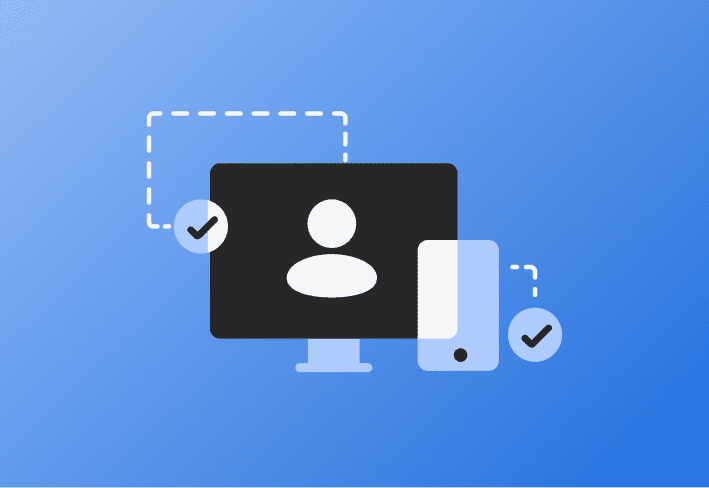Device management is a prime concern regardless of how you acquired your company’s iPhones, iPads, iMacs, MacBooks, and other Apple devices. That means you need to get each machine into your Apple Business Manager (ABM), Apple School Manager (ASM), or Apple Business Essentials account ASAP. But out-of-the-box device management is only an option when you purchase your fleet from an Apple-authorized source. We’ll tell you how to add existing devices through Apple Configurator so that you can harness the power of ABM.
Requirements for adding an existing device to ABM
While you should be able to add most Apple devices to your ABM, some may not qualify. (We’re looking at you, iOS 1 through 15 aficionados).
You must also be located in a country where ABM is available. You should be good to go if you live in an approved country and purchased the device from Apple, an Apple Authorized Reseller, or an authorized cellular carrier.
Requirements for adding existing devices to Apple Business Manager |
|---|
Be in a country where ABM is available Run a current OS on all involved devices* Have Apple Configurator on the device used to enroll other devices Be familiar with Setup Assistant * To be manually enrolled, Macs must also have Apple Silicon or the Apple T2 Security Chip |
But don’t worry! Even if the newest iPhone in your fleet was found on the street by your CEO’s best friend’s cousin’s dog, you might still be able to enroll it in your ABM account. The main thing is that both the device you’re using to complete the process and the target device need a relatively current OS. Since some older Apple devices are incompatible with newer operating systems, this may slightly restrict eligible devices. Otherwise, you may need to update your systems before proceeding.
The device used to add other devices to ABM also needs Apple Configurator, which you can download for free. Additionally, Macs must have Apple Silicon or the Apple T2 Security Chip to enroll manually.
You can add iPhones, iPads, and Macs via Apple Configurator for iPhone. Meanwhile, you can use Apple Configurator for Mac to add iPhones, iPads, and tvOS devices.
These methods lean heavily on the Setup Assistant, which works with User Enrollment, Device Enrollment, and Automated Device Enrollment.
Add an existing device using Apple Configurator for Mac
Manually adding devices through Apple Configurator for Mac is a relatively straightforward process. We’ll walk you through adding iPhone, iPad, or Apple TV devices using a MacOS device, one of the most common use cases.
If the device you want to enroll isn’t new, it will need to be erased. Back up any data, turn off Find My, sign out of iCloud, and erase your device before you begin.
Via USB, connect the device to a Mac computer with Apple Configurator installed.
Open Apple Configurator.
Select the device.
In the toolbar, click Prepare.
Select Manual Configuration from the drop-down menu.
Check Add to Apple School Manager or Apple Business Manager.
Uncheck Activate and Complete Enrollment and click Next.
In the MDM Server drop-down menu, choose New Server. Click Next. (If you haven’t already entered your Apple Customer Number, you may need to do so.)
In the Name field, enter Apple Business Manager. Leave the MDM Server URL as is. Click Next.
You’ll receive an "Unable to verify the server's enrollment URL” message. Don’t panic. Click Next and take a deep, calming breath.
Don’t add a certificate. Just click Next.
Either select your organization or New Organization. Click Next.
Input the relevant Managed Apple ID. The associated ID must have an Administrator or Device Enrollment Manager role. Click Next.
Click Continue to sign in.
Select Generate a new supervision identity.
In the Setup Assistant, select which panes you want to include. Click Next.
Choose a network profile. If you do not already have a network profile, you’ll need to set it up before proceeding. SimpleMDM supports custom configuration profiles for more flexibility. Once you’ve selected your network profile, click Next.
Enter your macOS administrator credentials. Click Update Settings.
If prompted, unlock and/or erase the device. Complete the enrollment in the Setup Assistant.
In the Devices section of your ABM portal, go to the group labeled Devices added by Apple Configurator. Assign the device to an MDM server.
Note: If you want to use Automated Device Enrollment (ADE) with the device, assign it to an MDM server before proceeding with Setup Assistant.
Add an existing device using Apple Configurator for iPhone
If you’re looking to add devices using an iPhone, you’re in luck! Apple Configurator allows you to add iPhones, iPads, and Macs from the comfort of your favorite iOS device.
Again, you’ll need to erase any already-configured device you hope to add to ABM. You know the drill — back up your data, turn off Find My, sign out of iCloud, and erase that bad boy before diving into the following process.
Open the Apple Configurator app on your iPhone.
Turn on the target device.
Continue through the Setup Assistant until you reach the Country or Region pane for adding a Mac device or the Choose a Wi-Fi Network pane for adding an iPhone or iPad.
Bring the iPhone you’re using to add devices close to the target device.
Either scan the Setup Assistant image or select Manual Pairing in Apple Configurator and enter the relevant code.
Complete the process in the Setup Assistant, then select Shut Down or Erase and Shut Down.
If you didn’t already assign the device to an MDM server in the setup process, you can still do so. In your Apple Business Manager portal, navigate to the Devices section, and go to the group labeled Devices added by Apple Configurator. Assign the supervised device to an MDM server.
Now punch the air in victory.
Once you manually add existing devices to Apple Business Manager, Apple School Manager, or Apple Business Essentials, you can do all the same things you might do with devices enrolled automatically. Assign an enrollment profile. Manage Activation Lock. Set up that Shared iPad you’ve always dreamed about. Give users access to a self-service app store (if your MDM solution supports it). Just live your best life.
FAQ
Can you use existing Apple devices with Automated Device Enrollment?
Yes. Apple ADE works with any enrolled device assigned to your ABM account.
Formerly known as Apple Device Enrollment Program (Apple DEP), ADE had traditionally been reserved for new devices purchased through the Apple Store, Apple Authorized Resellers, and cellular carriers. While self-enrolled devices won’t be ready to go right out of the box, ADE still might help you set up your devices more quickly. Once you manually add an existing device to your ABM account and erase the device to the setup screen, you can use ADE to configure it and enroll it in your MDM.
I’m receiving “INVALID_INPUT” when I assign devices to an MDM server within Apple Business Manager. Why?
You may receive an "INVALID_INPUT" error from Apple Business Manager when assigning devices to an MDM Server object. This error typically means that a device serial number you provided doesn’t exist in your Apple Business Manager account, so it can’t be assigned to the server.
There are a few reasons why a serial number might not exist in your account:
The device was just purchased. It can take a few hours for the serial number to appear.
Apple or your Apple Authorized Reseller has yet to register the order with your Apple Business Manager account. You will need to contact them and request that they do so.
The device was purchased through an ineligible channel. You might be able to add it to your Apple Business Manager account manually. See above.
If you continue to see the "INVALID_INPUT" error after verifying that your equipment order has been registered with your Apple Business Manager account, we suggest contacting Apple for additional troubleshooting.
Not all devices follow a straight pipeline directly from Apple to your office. Maybe a former employee abandoned a personal device. Maybe a generous donor gave you their castoffs. Or maybe you just purchased devices through a non-Apple-approved vendor. (We don’t judge.) But no matter how they came into your possession, you may still be able to add these devices to ABM following the above methods. Boom. That's efficiency.
If you’re looking for more ways to perfect your Apple device management, sign up for a free 30-day trial of SimpleMDM. It’s easy, intuitive, and just plain simple. And don’t forget to keep an eye on the SimpleMDM blog for the latest Apple news and tips.

